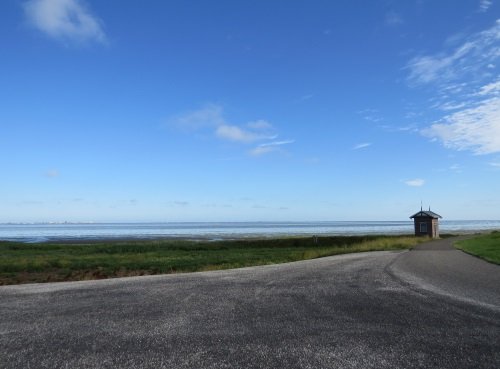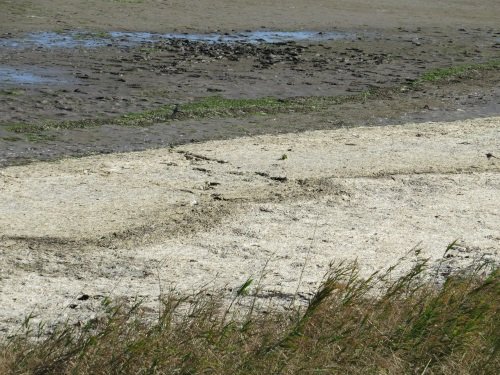The
Wadden Sea
WHS covers a huge area along the coasts of the Netherlands, Germany and Denmark, so it’s an easy site to tick off. Getting a real feel for it though is a whole different story. I believe one should at least try to cover several different areas, and take in both the marine and coastal aspects. Early August 2015 I made my third trip to the inscribed area, still searching for its soul.

|
|
Wadden Sea seen from a distance
|
My first visit was in 1982: I was 12 years old and went on a school trip to the Wadden island of Vlieland. It was the first time that I went away for a couple of days without my parents, not counting a disastrous girl scout camp that I left crying already after one night. Vlieland was more of a succes, it’s a really popular holiday island geared to an active vacation. I still have some very funny pictures of that time. Although the islands are outside of the core zone of the WHS, you’ll inevitably cross the Wadden Sea by ferry. So technically – I had been there.
In 2011, on my way to the T-listed
Eise Eisinga Planetarium
in Franeker, I had driven the Afsluitdijk route. The
Afsluitdijk
is a major causeway damming off the former Zuiderzee and turning it into the fresh water lake of the IJsselmeer. It has been a candidate on its own for the Dutch Tentative List, but it was rejected because it isn’t a national monument and its universal value was seen as doubtful. Halfway there’s a parking lot with a footbridge, from where you can see the IJsselmeer on one side and the Wadden Sea on the other. It’s a windy spot, and on the north side you taste the sea salt on your lips.

|
|
Wadden Sea at low tide, near Den Oever
|
This weekend I decided to check out the coastal stretch between Den Oever and Den Helder, at the tip of the province of North Holland. First I drove to an area named “Balgzand”. This is the best place to see lots of birds: at low tide large numbers of them congregate at the sandbars to search for little creatures to eat. The zone itself is not accessible, you have to watch from one of the bird hides. A group of some
40 spoonbills
were feeding and washing themselves when I arrived. You’ll need a strong lens to take good photos, as the hides are far away from where the action is.
I then drove on to Den Oever. This is a small fishing village where not much seems to happen. I parked in the streets and then climbed the seawall that guards the town. Here a combined biking and hiking path gets you closer to the sea, though the tide was still low and there wasn’t much water in sight. I had a pleasant walk along the coast to the Wadden Harbour of Den Oever, a fishing harbour where sometimes seals are seen. I did not see anything but birds however, mostly cormorants drying their feathers in the sun.

|
|
Cormorant in the harbour of Den Oever
|
So that makes 3 visits in total, but I am still not satisfied with the “experience”. It’s really hard to say which part of the designated areas delivers a representative visit for the casual visitor. The
official website
is not much help as it is more about tourist promotion of the general area than about the WHS. Maybe a proper mud hiking tour (only possible with a guide) would do the trick to at least get a "feel".



